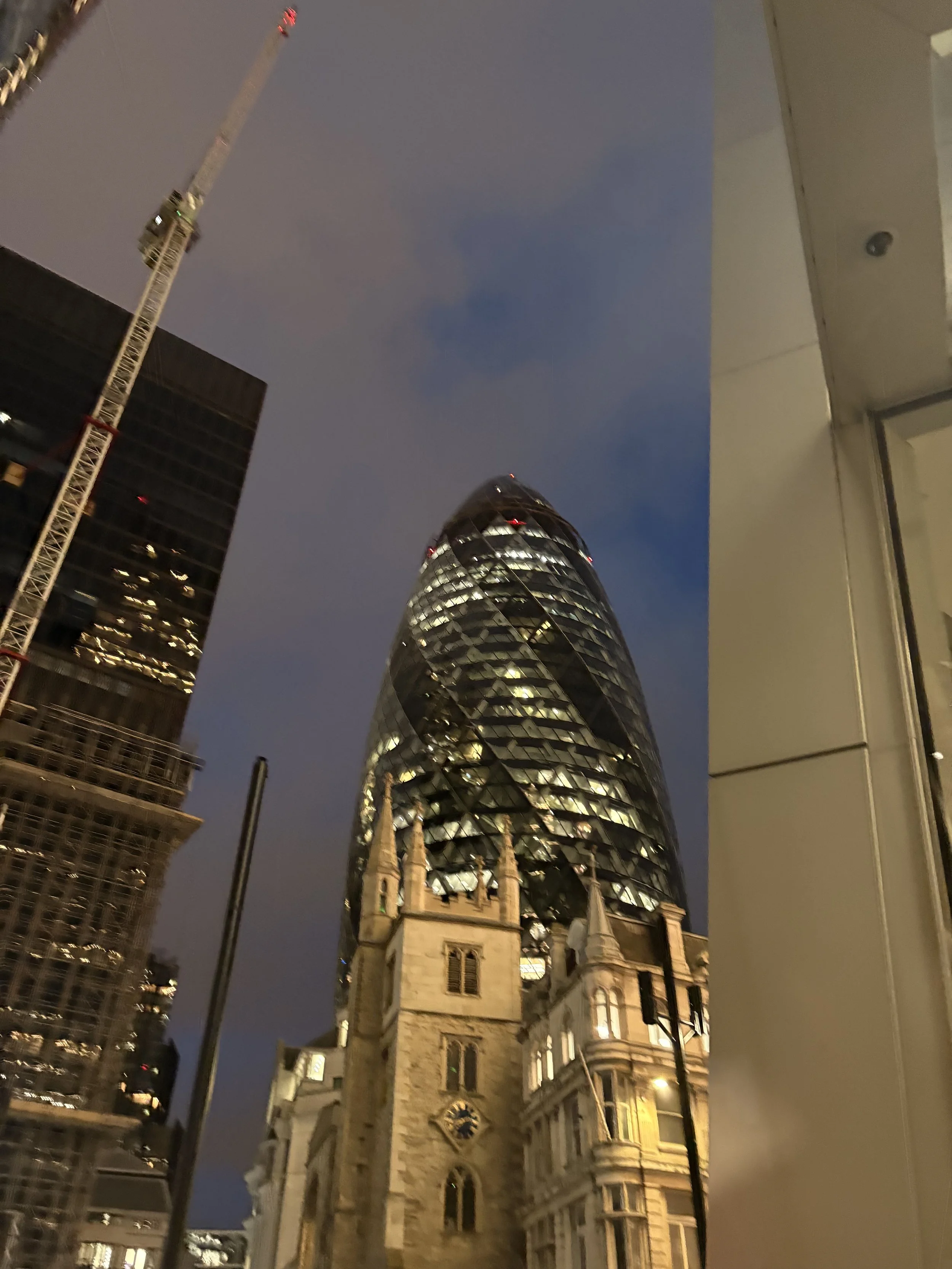Why London Is Betting Big on Green Finance
By Mihika Wagle (10/19/25) — London, UK
My first week in London was largely spent exploring. One evening, for a field trip, our First Year in London cohort visited the London Financial District. The London Stock Exchange immediately stood out to me. I noticed how the decisions made inside that building impact the entire world. Traders had just gotten off work, headlines flashed across screens, but what caught my attention was something that doesn’t usually make the news ticker: Green bonds.
I had heard about green bonds from my professors, but never completely understood them, so seeing London highlight them made me interested in learning more. What intrigues me about green bonds is that they show how profit and purpose do not necessarily have to be separate.
What Makes a Bond Green?
I knew what bonds were, generally, from my classes. However, I was still curious about what makes a green bond different from a regular bond. This implored me to dig deeper and discover that green bonds are just like regular bonds, except the money raised must be used for environmentally friendly projects. That means things like renewable energy plants, sustainable housing, and clean transportation systems.
In London, this has played out in a way that impacts locals’ daily lives. For example, Transport for London issued green bonds to help fund cleaner buses and upgrades to the Underground. Investors in London are using finance to fund systemic change.
Inside one of London’s entirely electric double-decker buses funded by green bonds.
What I was particularly intrigued by was the specifics of London’s role. The London Stock Exchange was the first financial hub in the world to create a dedicated green bond segment back in 2015, and it now lists more than 300 green bonds from over 100 issuers in multiple currencies. While China and Germany currently dominate global green bond issuance, the UK has carved out a specialty in financing renewable energy, especially offshore wind, as well as sustainable transport through projects like Transport for London. It has also created specific segments where issuers can list their green bonds with full transparency about how the money will be used. London is actively shaping the future of global finance by making sustainability a central focus.
To get another perspective, I turned to my statistics teacher, who has experience working with fixed-income securities. I asked him for his opinion on the investor side regarding the unique role London plays in green bonds as a whole, and he replied with “London has always had a deep pool of bond trading, especially on the secondary market. It has had a strong tradition of issuing bonds in currencies other than GBP (e.g., eurobonds) and was an early mover in green bonds. His point stuck with me because it highlighted that London was instrumental in the expansion of green bonds.
Green finance is not just an abstract idea. It is shaping the choices investors make, the projects cities fund, and the careers people pursue. Green bonds are nowhere near the whole solution to climate change, but they are a reminder that money, when directed with purpose, can be one of the most powerful tools we have.




